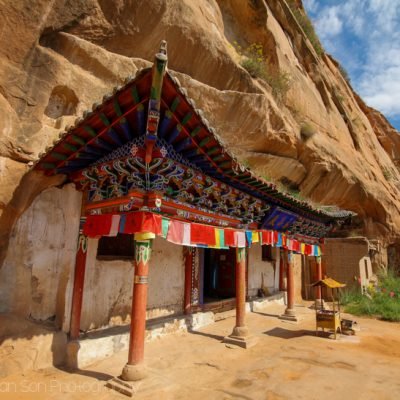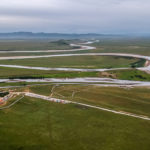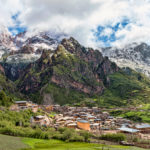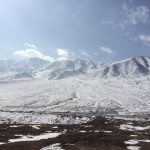Gansu’s Incredible Diversity
Historically the northwestern most boundary of China, Gansu 甘肃 formed a link between ancient China, the Middle East, and the West. Travelers along the Silk Road entered China through Gansu Province, before ending their journey in neighboring Xi’an.
Lying at the crossroads between, Han, Tibetan, and Hui (Muslim) China, the culture, much like the geography, in Gansu is incredibly diverse. Gansu Province is home to ancient relics from all three cultural groups, a rare mismatch of treasures to explore in one place.
Out of all the amazing places I’ve visited in China (and the world), and there are many, Gansu without a doubt shoots straight to the top of my list of coolest trips I’ve ever taken. It is so insanely unique there were times I literally thought I was on another planet.
Here are some of the best places in Gansu. We think you will be glad you visited 🙂
The 10 Best Places in Gansu
1.) Labrang Monastery
One of the best places in Gansu is definitely Labrang Monastery. Stand on the corner of the monastery pilgrimage and allow the smells of burnt juniper and grain offerings to fill your nose. Listen to the creaking of spinning prayer wheels and bells tinkling in the wind as you enter Labrang monastery. Here, as you amble around the world’s longest stretch of prayer wheels along a 3.5km long path around the monastery perimeter, you will encounter Tibetan pilgrims who have come to Labrang Monastery to pray for their friends and family. The monastery, with 1,600 monks, 18 temple halls, and six separate institutes of learning is a small city in and of itself and dominates the western part of Labrang town.
See the Labrang travel blog here
See one of our favorite itineraries to Labrang here
2.) Zhangye
From the legendary Horse Hoof Temple (Mati Si) to the striking colors of the Rainbow Mountains, Zhangye is definitely one of the best places to visit in Gansu. Zhangye is a small town on the Hexi Corridor of the Silk Road that presents some of the most unique, awe inspiring desertscapes of western China. This is a must visit destination for those looking to explore the 2000 year old history and culture of the Silk Road.
For More information on Zhangye
https://www.elevatedtrips.com/zhangye/
See the Zhangye travel blog here
See one of our favorite itineraries to Zhangye and the Silk Road here
3.) Dunhuang
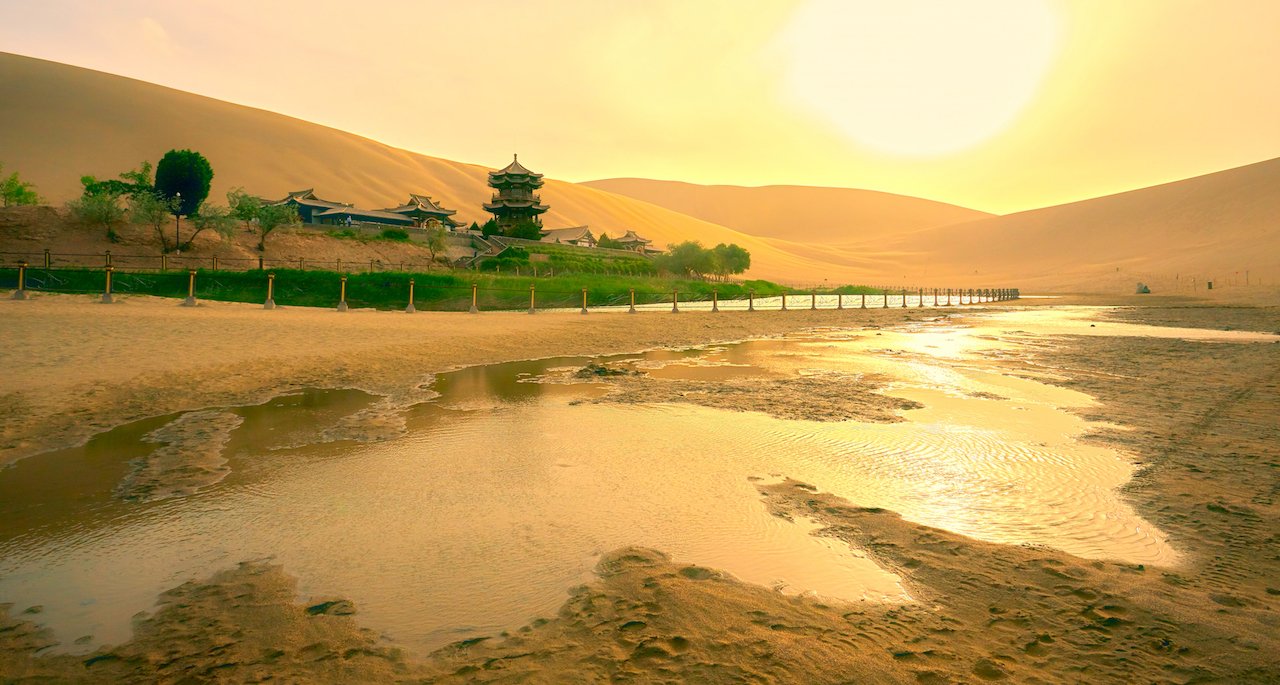
Dunhuang is a Silk Road trading town that offers vast stretches of open desert, camel rides, a great walking night market, and the Mogao Cave Grottoes. The Mogao Cave Grottoes are sometimes known as the “Caves of 1000 Buddhas” and are a must see for art and history buffs, making this a must visit “best place in Gansu”. Check out the UNESCO World Heritage site for more information on the Mogao Caves.
From the 4th to the 14th century, hundreds of caves were hand carved out of the rock cliff face containing scriptures, statues, and vibrant Buddhist paintings.Today almost 500 caves remain and there are more than a thousand painted and sculpted Buddhas within the caves which contain the world’s largest collection of Buddhist art.
For More information on Dunhuang
https://www.elevatedtrips.com/dunhuang/
See the Dunhuang travel blog here
See one of our favorite itineraries to Zhangye and the Silk Road here
4.) Hezuo
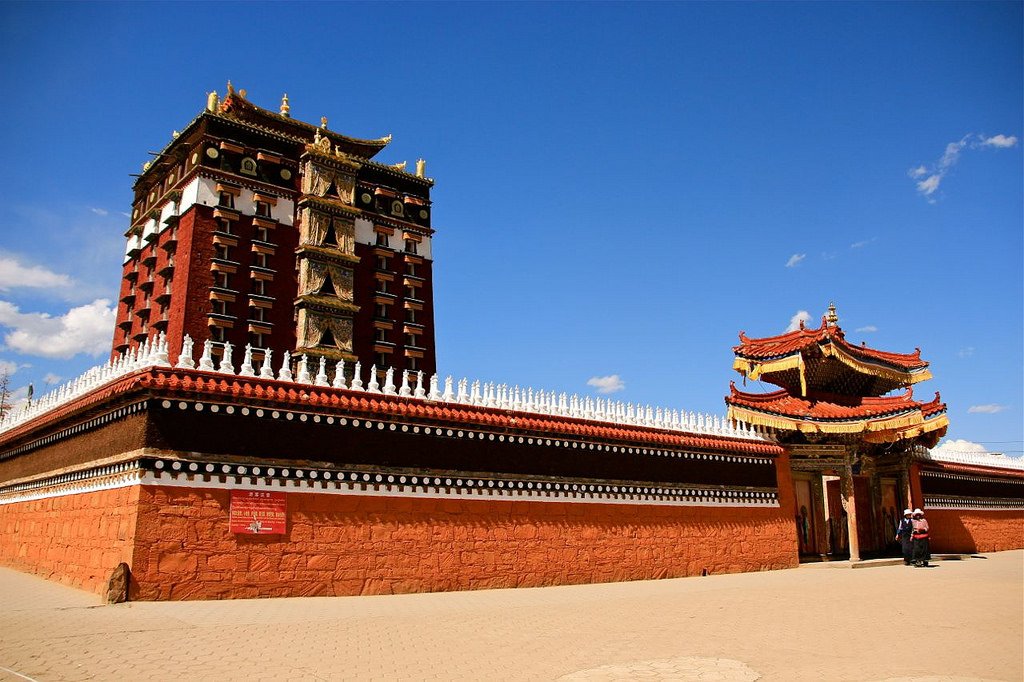
Hezuo is a town in southern Gansu Province. It is also the capital of Gannan Tibetan Autonomous Prefecture.
Standing at the junction of Gansu, Qinghai and Sichuan provinces, it is the hub of nomadic activity in the central plains region of Amdo Tibet. It is also the center of trade between historical Tibetan and Chinese trading. It is known as a gateway into the high grasslands of both Labrang and Langmusi and has an amazing 9-story Buddhist temple that tells the story of one of it’s greatest saints and heros, Milarepa.
For More information on Hezuo
https://www.elevatedtrips.com/hezuo/
See the Hezuo travel blog here
See one of our favorite itineraries to the nomad lands of Hezuo here
5.) Langmusi
Located right on the border of Sichuan and Gansu Province, Langmusi is a town that offers two distinct monasteries- one on each side of the provincial border. Langmusi (郎木寺; Lángmùsì – Tibetan: Taktsang Lhamo) means “den of tigers” in Tibetan. While there are no tigers there today, one can walk the deep rocky Namo Gorge just outside of town, past the bubbling spring that is the source of the White Dragon River, and can easily see how this Bavarian-esque landscape could have once been the remote mountain sanctuary for such wild beasts.
Langmusi, at 3,200 meters in elevation, is a town that is known for it’s rich Buddhist culture and it’s amazing scenery, tucked away in the crags of 5000 meter mountains. It would be very easy to spend at least 2-3 days here in this quaint wonderland.
For More information on Langmusi
https://www.elevatedtrips.com/langmusi/
See the Langmusi travel blog here
See one of our favorite itineraries, including epic trekking, to Langmusi here
https://www.elevatedtrips.com/langmusi/
6.) Lanzhou
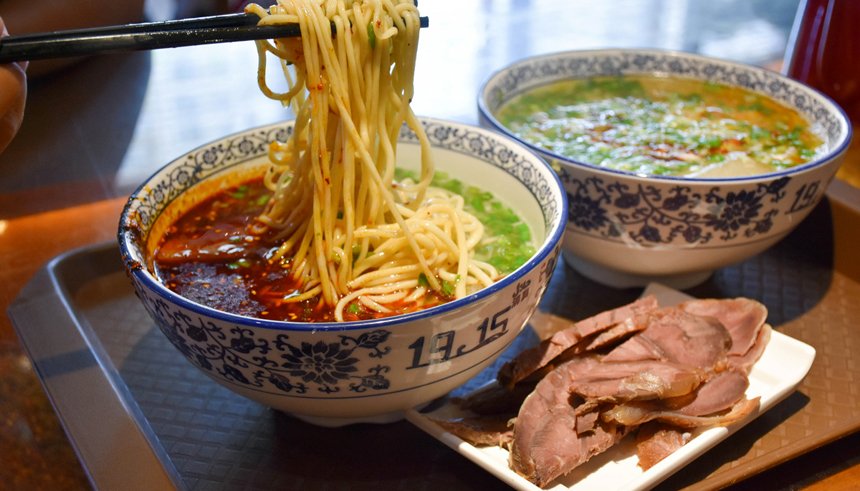
Lanzhou is the capital city of Gansu Province in northwest China at an elevation of 1518 m (4980 ft). his makes it a shoe-in for one of the best places in Gansu and a likely starting point for all the other journeys listed on this page. The Yellow River runs through the city and it is definitely worth an afternoon of your time to rent bicycles and cruise along the river for 2-4 hours. The city is the transportation and telecommunication center of the region and is the largest city in western China. Once a hub on the Silk Road, today Lanzhou is a hub for tourists as they begin their adventures out into the Silk Road, with the Maiji Caves to the east, the Bingling Temple Grottoes to the west, Labrang Monastery to the south and the ancient cave paintings of the Dunhuang Mogao Caves to the nort
https://www.elevatedtrips.com/lanzhou/
7.) Yadan National Geological Park
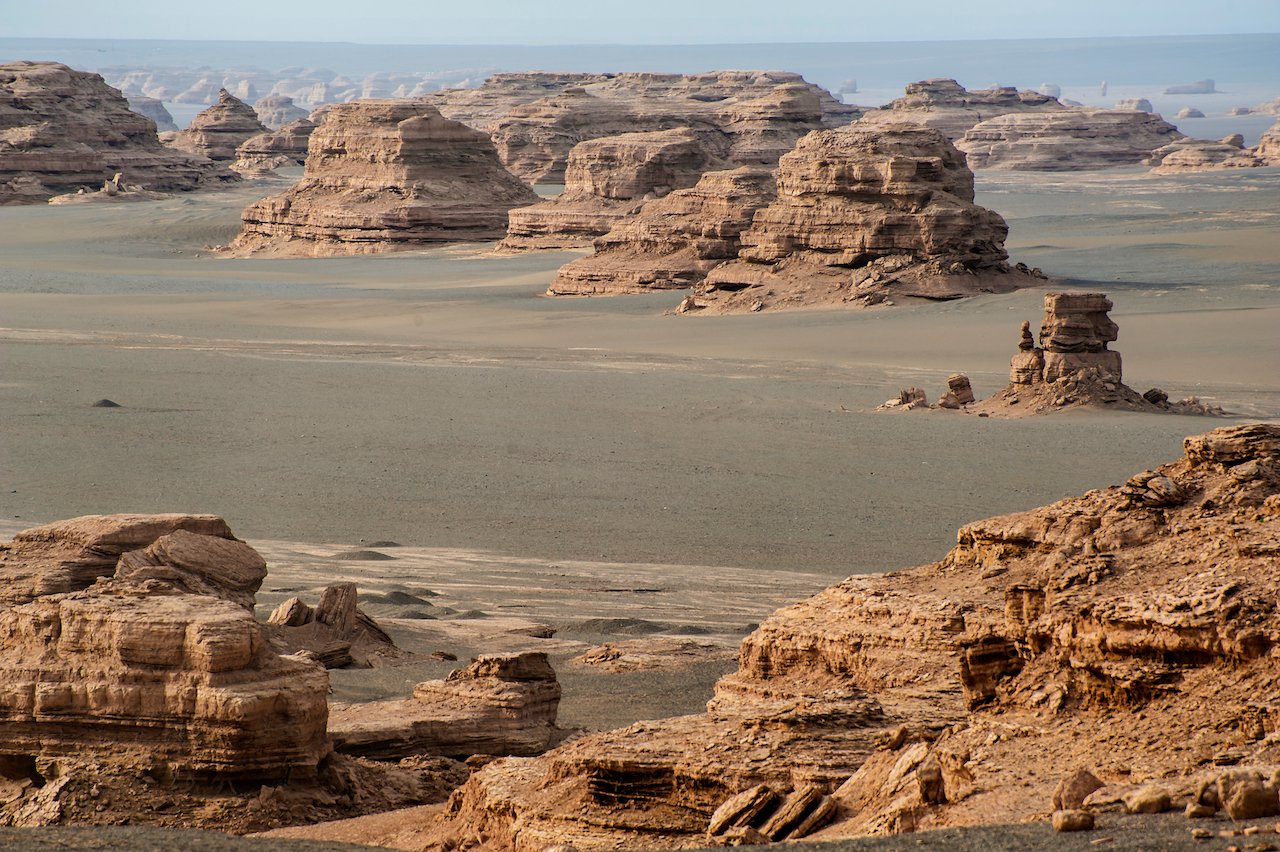
Located about 180 km northwest of Dunhuang City, Yadan National Geological Park occupies an area of about 398 square kilometers and has the largest landforms of its kind in all of western China. This park also has the nickname, “Devil City” because the wind howls here eerily through the open desert like the scream of a devil.
Many Chinese war movies have been filmed here because of its remote location and unique desert formations. Here the the vast expanses of Gobi Desert meet with stunning red rock scenery in a haunting and breathtaking landscape that feels more like something from Mars than it does something from Earth.
https://www.elevatedtrips.com/yadan/
8.) Bingling Temple
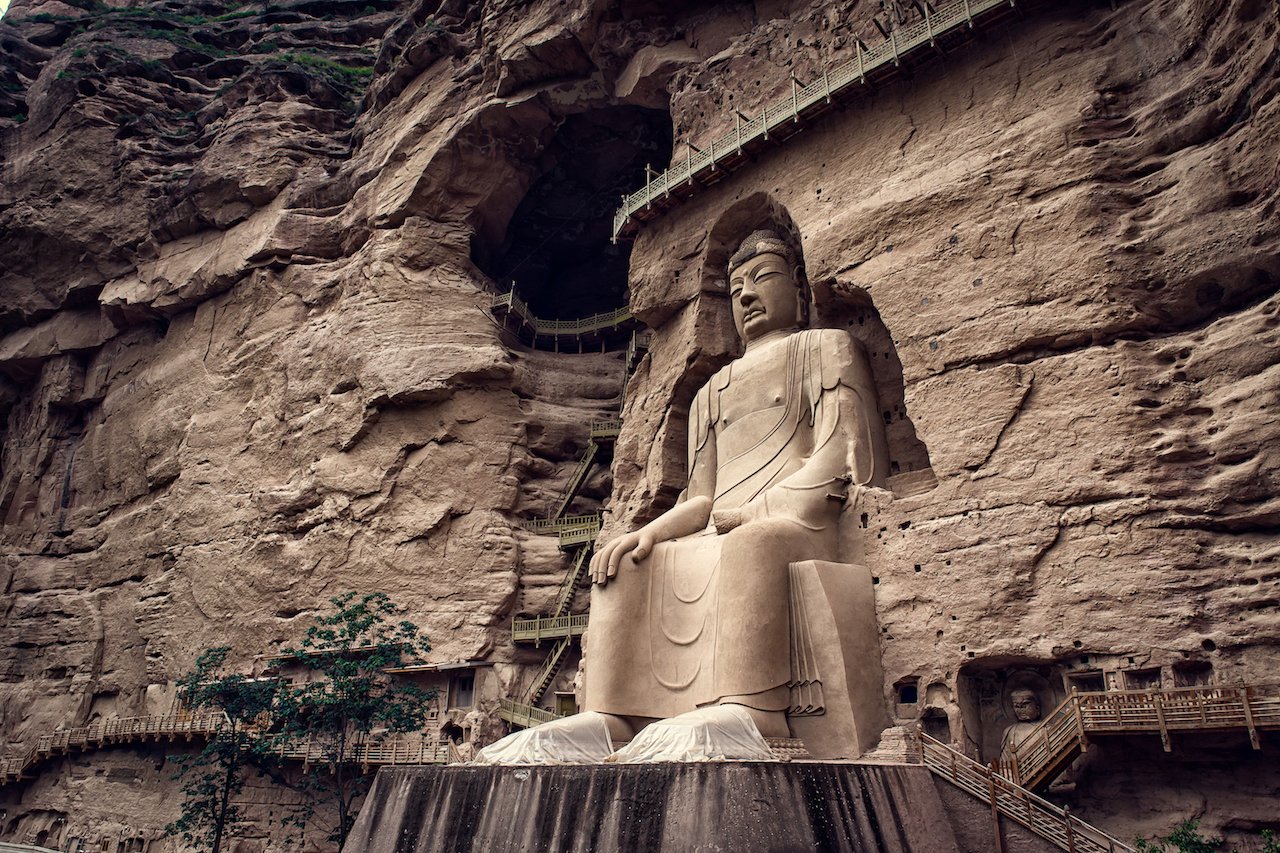
The Bingling Temple (simplified Chinese: 炳灵寺; pinyin: Bǐnglíng Sì) is a series of grottoes filled with Buddhist sculptures carved into natural caves and caverns in a canyon along the Yellow River. It lies just north of where the Yellow River empties into the Liujiaxia Reservoir (劉家峽水庫; Liújiāxiá Shuǐkù). The grottoes feature a huge 27 meter/ 100 ft tall Buddha carved into the side of the cliff just about the Yellow River.
Bingling Si is a 1.5 hour drive from Lanzhou, the capital of Gansu, making this a very accessible full day trip. You could also do this trip as a larger itinerary that continues onto Labrang monastery or Hezuo and Langmusi as well which are in southern Gansu Province.
https://www.elevatedtrips.com/bingling/
9.) Jiayuguan and the western Great Wall
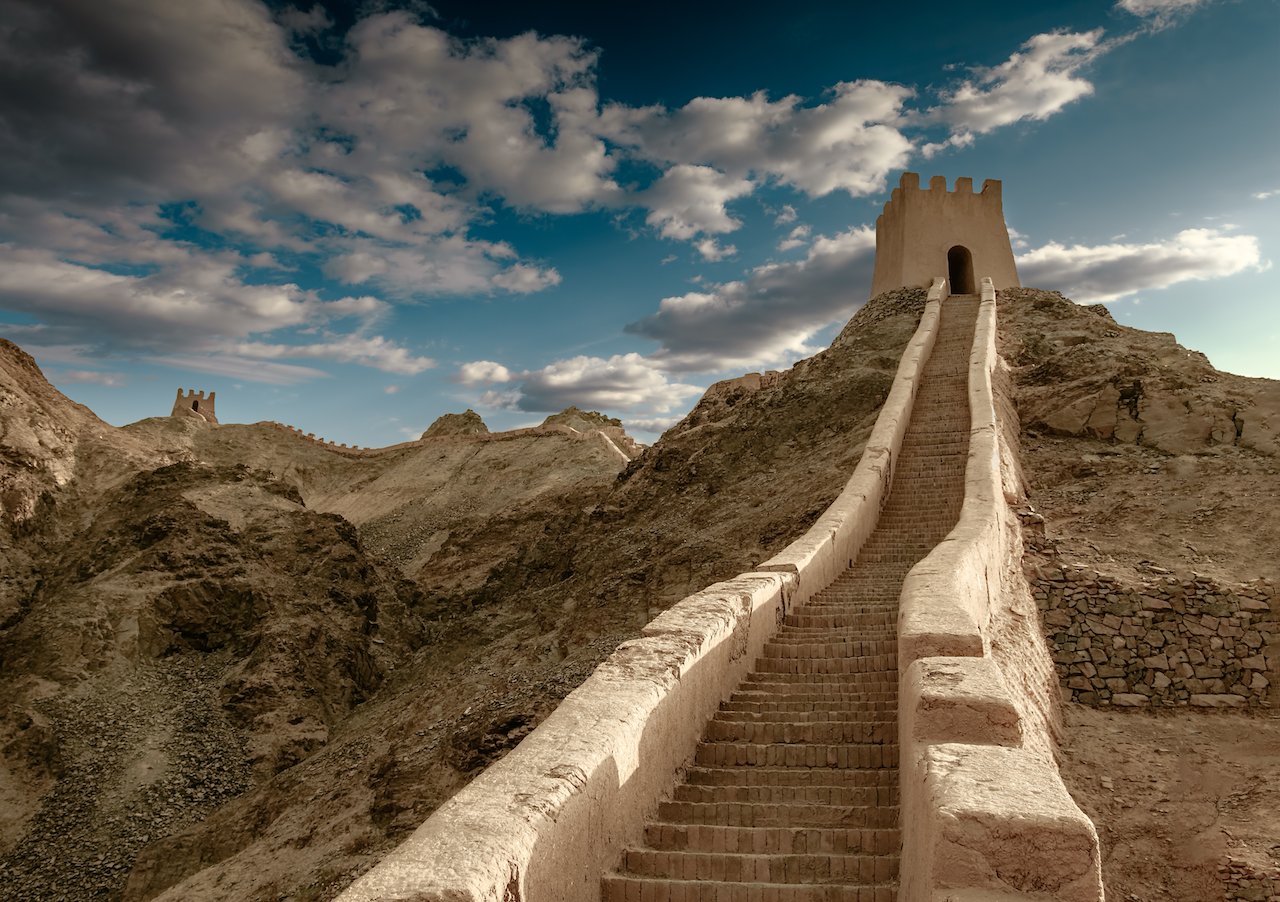
Jiayuguan Pass is an iconic image of western China. Sandwiched between the snowy 6000 meter Qilian Mountain peaks and the Black Mountains of the Mazong Shan Range, this fort sits in a truly strategic military location. Built in 1372, this fortress was the last major stronghold of imperial China – the end of their ‘civilised world’, beyond which lay a harsh and haunted desert and the barbarian armies of Central Asia.
At the same time, the Jiayuguan Pass has also been a key waypoint on the ancient Silk Road. Foreign travelers and traders came from Europe, Centra; Asia, and entered China at this important point. Along with the foreign trade, a cultural exchange of religion, art and customs has since forever changed China’s cultural landscape.
https://www.elevatedtrips.com/jiayuguan/
10.) Maiji Shan
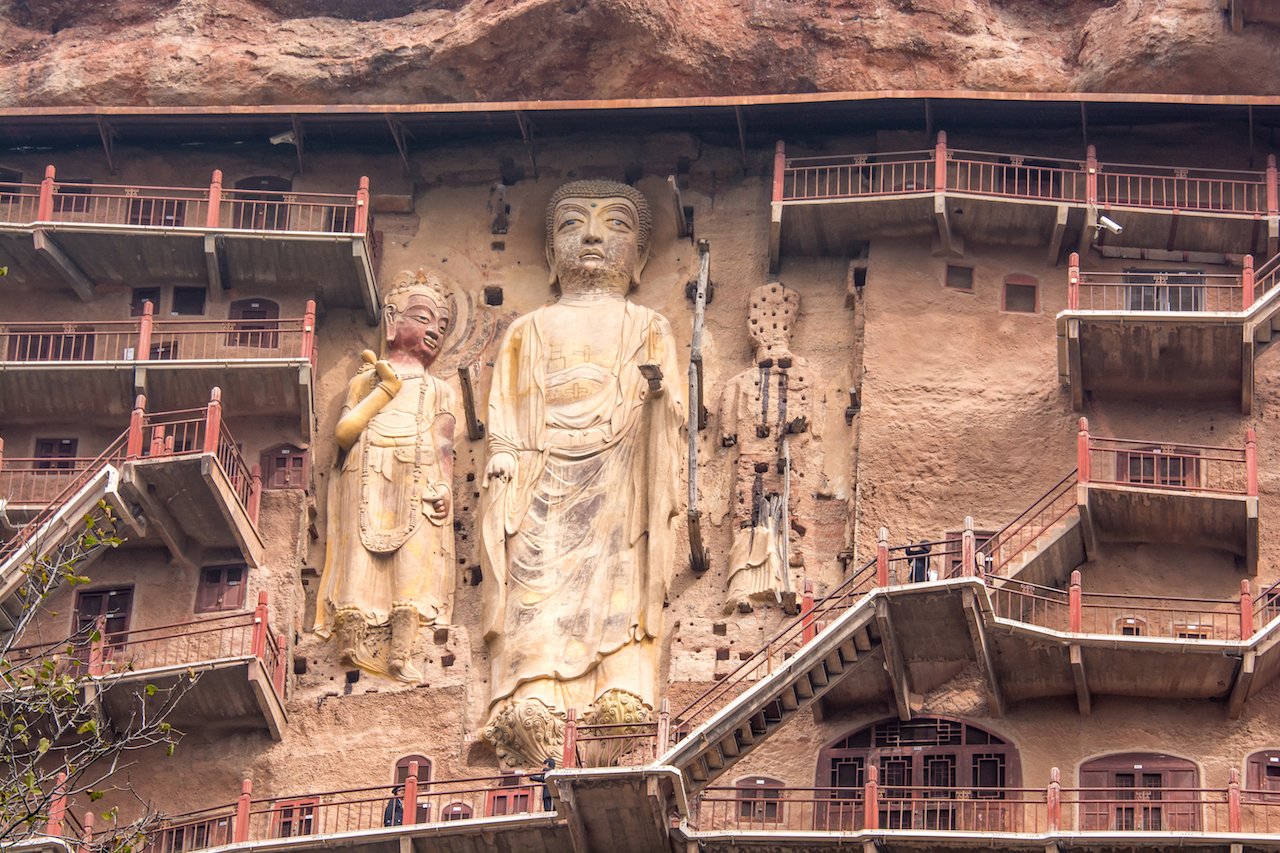
With a backdrop of the lush, green mountains just southeast of Tianshui town, the grottoes of Maiji Shan contain some of the most famous Buddhist rock carvings along the Silk Road. The steep cliff faces of Maiji Shan are scattered with 194 caves holding more than 7,800 sculptures carved principally during the Northern Wei and Zhou dynasties (AD 386–581). If you dare to ascend to the higher grottoes, you will need to cross a series of wooden planks and steps that ascend the outside of the cliff face to the top of a Buddha carved in the rock.
https://www.elevatedtrips.com/maiji-shan/
